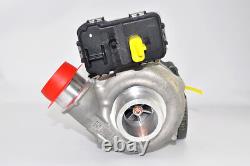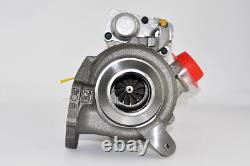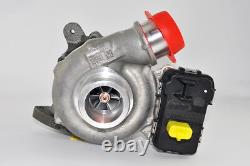49477-01203 Mhi Turbocharger Jaguar XF 2.2 Land Rover Freelander 49477-01214





The description of this item has been automatically translated. OE Codes: 9674675380, 9676272680, 980914928, BG9Q6K682CB, BG9Q6K682CC, LR022358, LR038309, LR038322, LR049592, LR065510. XF (X250): 2.2 D. 05.2011 - 04.2015. 03.2012 - 04.2015. XF SPORTBRAKE (X250): 2.2 D. 09.2012 - 04.2014. DISCOVERY SPORT (L550): 2.2 D 4x4. FREELANDER 2 (L359): 2.2 SD4 4x4.
08.2010 - 10.2014. RANGE ROVER EVOQUE (L538): 2.2 D 4x4.
ATTENTION: CHECK THE CODE SHOWN ON THE PLATE OF YOUR TURBINE. Correct installation of a turbocharger. The turbocharger it is a component that hardly fails on its own, but other components intervene which, with their malfunction, cause them to break. It is therefore necessary, ALWAYS, that before installation the cause of the failure of the first turbine is found. We remind you that the replacement of a turbocharger NOT it is a simple thing and the delicacy of the same needs the staff highly specialized for processing.Operations to be carried out for correct installation, divided by the different systems. Replacement of the oil pipes to and from the turbine (often NOT cleaning alone is sufficient).
Removal and cleaning of the oil pan from any carbon deposits. Check the correct operation of the oil pump and, if necessary, remove and clean it.
Cleaning the lubrication ducts of the engine. To avoid absolutely liquid seals when assembling the lubrication lines!! Before installing the new turbocharger, check that the oil reaches the turbine correctly by "bleeding" it as follows: correctly install the turbine lubrication ducts, fill the engine with new oil.
Run the engine, being careful of NOT start it, giving small "taps" with the ignition key. Let out about half a liter of oil. Check the purity of the oil. You will discover that, however meticulous and fussy your attentions have been, there will be small dots suspended in the new oil.
Think what would have happened if they had gone inside your new turbocharger.. Fit the turbocharger taking care to fill it in advance of oil. Start the engine and let it run at minimum rotary speed for about 5/10 minutes, checking that there are no leaks and avoiding sharp acceleration with a cold engine. NEVER turn off the engine after an acceleration because the turbine continues to rotate due to inertia of motion, but the lubrication is lacking!! Special note for engines BMW : Substitute ALWAYS the breather unit or fume recovery filter, located above the valve cover!! Replacing the air filter regardless of mileage with a good quality one. Check the integrity of the entire intake duct. Clean the intercooler, if particularly clogged, replace.Check the integrity of the collector. Check the integrity and cleanliness of the catalyst and particulate filter. Check the integrity and cleanliness of the silencers. Check the integrity, cleanliness and operation of the EGR valve. Check the vacuum control of the Wastegate valve if pneumatic and correct signal arrival if electronic.
Check the correct functioning of the mass air flow meter (air mass meter). Check the correct functioning of all the other sensors located in the engine. Verification and possible removal of error messages inside the control unit (they may contain error messages in the memory that reappear when the car is started, sending it back to self-protection even if the cause has been removed). The turbine is a mechanical organ. If the diagnostics give you: "turbocharger malfunction", the cause is to be found elsewhere!! There are no sensors on the turbine that can signal a malfunction of the same!!! They report that the turbocharger is malfunctioning due to... Instead, check the exhaust, the Wastegate valve control, or other electronic components, which may still operate intermittently. Or Before installing the new turbocharger, check that the oil reaches the turbine correctly by "bleeding" it as follows: correctly install the turbine lubrication ducts, fill the engine with new oil.Think what would have happened if they had gone inside your new turbocharger... Or Verification and possible removal of error messages inside the control unit they may contain error messages in the.


